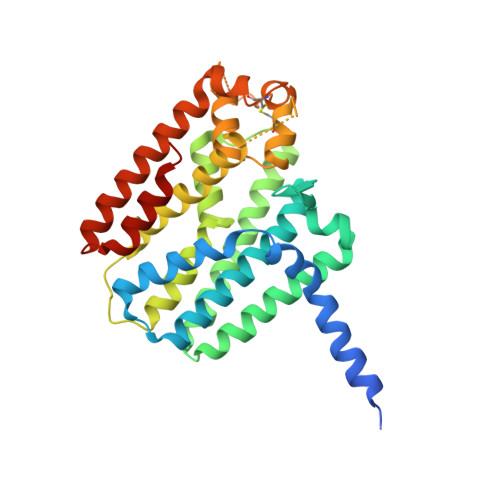Unraveling the Prenylation-Cancer Paradox in Multiple Myeloma with Novel Geranylgeranyl Pyrophosphate Synthase (GGPPS) Inhibitors.
Lacbay, C.M., Waller, D.D., Park, J., Gomez Palou, M., Vincent, F., Huang, X.F., Ta, V., Berghuis, A.M., Sebag, M., Tsantrizos, Y.S.(2018) J Med Chem 61: 6904-6917
- PubMed: 30016091
- DOI: https://doi.org/10.1021/acs.jmedchem.8b00886
- Primary Citation of Related Structures:
6C56, 6C57 - PubMed Abstract:
Post-translational prenylation of the small GTP-binding proteins (GTPases) is vital to a plethora of biological processes, including cellular proliferation. We have identified a new class of thienopyrimidine-based bisphosphonate (ThP-BP) inhibitors of the human geranylgeranyl pyrophosphate synthase (hGGPPS) that block protein prenylation in multiple myeloma (MM) cells leading to cellular apoptosis. These inhibitors are also effective in blocking the proliferation of other types of cancer cells. We confirmed intracellular target engagement, demonstrated the mechanism of action leading to apoptosis, and determined a direct correlation between apoptosis and intracellular inhibition of hGGPPS. Administration of a ThP-BP inhibitor to a MM mouse model confirmed in vivo downregulation of Rap1A geranylgeranylation and reduction of monoclonal immunoglobulins (M-protein, a biomarker of disease burden) in the serum. These results provide the first proof-of-principle that hGGPPS is a valuable therapeutic target in oncology and more specifically for the treatment of multiple myeloma.
Organizational Affiliation:
Department of Chemistry , McGill University , Montreal , QC H3A 0B8 , Canada.

















